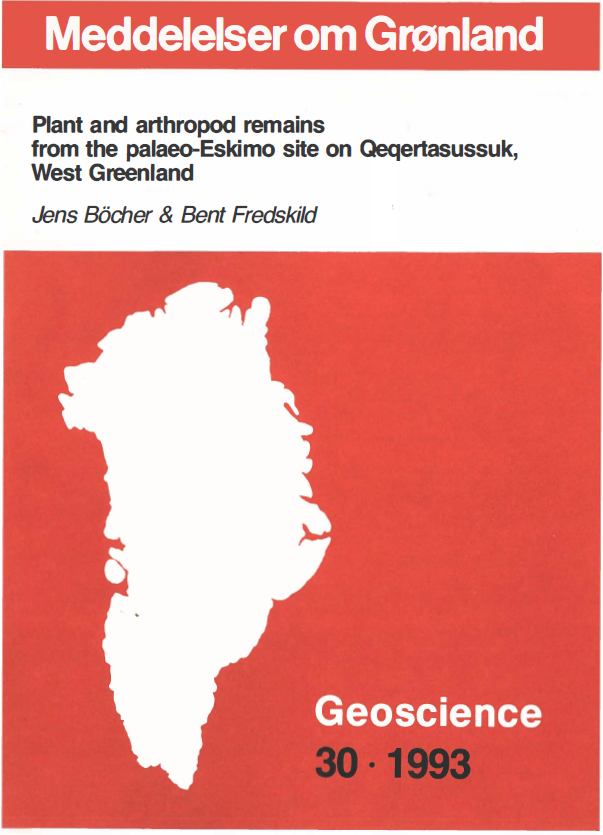Plant and arthropod remains from the palaeo-Eskimo site on Qeqertasussuk, West Greenland
DOI:
https://doi.org/10.7146/moggeosci.v30i.140331Abstract
Samples from the excavation of a palaeo-Eskimo site, settled ca. 3900~3100 14C yrs BP on a raised beach, were analyzed for pollen and botanical and entomological macro-remains.
In the dwelling area the original vegetation of grasses and Saxifraga spp. was covered by thick culture layers; under the midden Elymus mollis formed the original vegetation. During short uninhabited periods different grasses dominated. Following the termination of the habitation a mossy heath spread over the area.
The sediments contained abundant well-preserved fragments of insects and other arthropods. Besides oribatid mites, spiders and fly puparia, remains of beetles arcpredominant. Micralymma brevilingue plays a prominent role, but also Simplocaria metallica, Byrrhus fasciatus and the heteropteron Nysius groenlandicus are fairlynumerous. A former warm period is indicated by the finds of species at or well north of their present northern limit.
The succession of arthropod assemblages agrees with the palaeobotanical andarchaeological evidences. The fauna indicates the transition from typical arctic conditions: few species and low density, to stages with much higher diversity and density following fertilization, but also to stages of inferior conditions for plants and insects as a result of intensive human activity.
A lake pollen diagram shows that after a short pioneer zone first Salix glauca, then ca. 6400 14C yrs BP. Betula nana immigrates. Shortly before 3000 BP more cool/humid conditions are indicated in accordance with the general trend in the Holocene climatic development of West Greenland, which is briefly discussed and summarized.

Downloads
Published
How to Cite
Issue
Section
License
Coypyright by the authors and the Commision for Scientific Research in Greenland / Danish Polar Center. No parts of the publications may be reproduced in any form without the written permission by the copyright owners.

